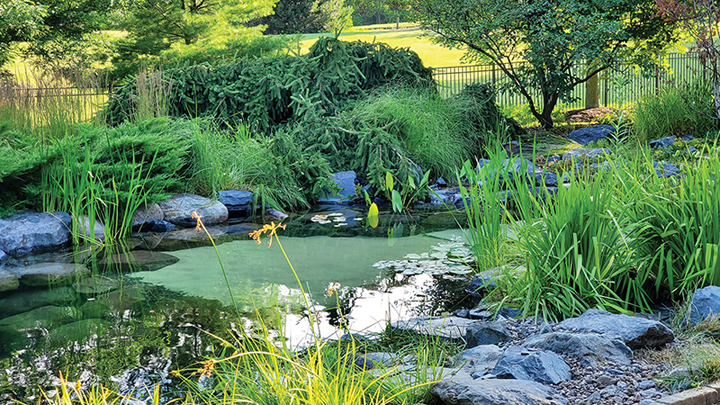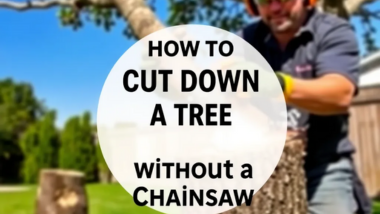Have you thought about turning your backyard pond into a garden? This guide will show you how to convert a pond into a garden. You’ll learn how to shoot your pool into a garden that’s both beautiful and productive. Let’s explore the benefits and steps to create this transformation.
First, let’s talk about why this is a great idea. By changing your pond into a yard, you can grow your own food and change the look of your yard. It’s a win-win situation for your backyard and your kitchen.
Transforming Your Backyard Pond
Converting a pond into a garden can be a rewarding project. It can change your outdoor space for the better. Let’s look at why and how you can do this.
Reasons to Convert a Pond into a Raised Bed Vegetable Garden
There are many reasons to convert a pond to a garden. For one, it cuts down on maintenance. Ponds need regular cleaning and upkeep, while yards are easier to care for. This means you can spend your time on other outdoor activities.
Another reason is that a garden looks better than a pond. With the right crops, flowers and design, your backyard can look amazing. It shoots your space into a peaceful oasis.
Also, a garden helps local wildlife. Ponds attract some animals, but gardens support many more. This changes your yard to a healthier place for nature.
Lastly, gardens use less water than ponds. They can be designed to save water and reduce waste. This is good for the environment.
Benefits of Having a Garden
Having a garden has many perks. It’s good for your health, causing you to feel less stressed and happier. It also gets you moving and connected to nature.
Gardening can save you money too. You can grow your own food, cutting down on grocery bills. A nice yard can even bring about an increase in the worth of your home.
From the planet’s point of view, backyards are great. They aid clean the air, store carbon, and support wildlife. Using native crops and eco-friendly gardening aids your local ecosystem.
Whether you’re changing a pond or starting a yard, the benefits are clear. Knowing the reasons and perks lets you start a project that changes the beauty of your outdoor space. It also aids the environment.
Assessing the Landscape of the Existing Pond
Before converting a pond into a green garden, it’s key to assess the pond first. Knowing the pond’s size, and dimensions helps you plan the garden design. This ensures a smooth change from a water feature to a new garden.
Measure Pond Dimensions
Start by measuring the pond’s dimension. These numbers are vital for planning the garden’s size and layout. Use a tape measure or a laser distance meter for accurate readings.
- Measure the length of the pond from one end to the other.
- Measure the width of the pond, taking several measurements to account for any irregularities.
- Measure the depth of the pond at various points to determine the average depth or how deep it is.
How to Convert a Pond into a Garden
Converting an old pond into a garden can change your backyard for a better experience. With the proper plan and steps, you can fill the pond area with a lush, productive garden. We’ll show you with a step-by-step guide on how to bring this change smoothly.
- Assess the Pond Dimensions: Measure the size of the pond and depth. This will tell you how much soil or organic matter you need for the yard bed. A 10 by 15 feet pond usually needs about 10 cubic yards of sand.
- Consider the Pond Liner and Drainage: Check the pond sheeting and drainage system. If it is still good, you can keep it and garden on top. But if it’s damaged or old, get rid of it and make sure your garden dries well.
- Address Wildlife Considerations: If your pond had fish or other aquatic life, think about their needs. You might have to create new water spots or move some plants to the yard for them.
- Prepare the Soil: After draining the pond and removing the sheeting, get the soil ready. Add compost or well-rotted manure to make it fertile and good at draining. This helps your plants grow well. Pond sludge is also a good nutrient for garden.
- Pick Appropriate Plants: Choose plants that fit your garden’s new conditions. Think about how much sun it gets, the soil type, and the weather. This ensures your vegetable will do well.
By following these steps, you can pivot your pond into a garden full of fresh produce, flowers, and wildlife. With good planning and action, converting your pond to a garden can be rewarding and good for the environment.
Preparing the Garden Site
After checking your pond, it’s time to get your garden ready. First, take out any unwanted stuff from the pond. This includes:
- Pond liner: Carefully remove the pond sheeting, ensuring it is disposed of properly.
- Pump and filtration system: Disconnect and remove the pump and any filtration equipment from the pond.
- Debris and plants: Clear out any debris, such as fallen leaves, branches, or accumulated silt, as well as any aquatic plants that have grown in the pond.
After removing these items, level the ground and get the ground ready for your garden. One of the important parts of gardening is to level the ground which will aid in the healthy development of your plants.
This ensures that your plants will have a flat, even surface on which to grow. There are many ways that you can even the ground for your garden, depending on the size and type of space you are working with.
For a small garden, you can do it by hand using a shovel. To begin, mark out the area that you want to even with stakes. Then, use your shovel to remove any high spots of soil, and fill in any low spots. Use a rake to smooth out the surface when you’re finished.
Add compost to the topsoil layer and work it with a fork to get it to all the areas of the soil. Compost is a combination of ingredients to serve as a form of fertilizer. This causes the soil to be richer and better at draining and prevent retarded growth in crops.
Then, till the soil to make it smooth and even. Tilling helps to prepare the soil for new plants. Preparing the site well means your garden will grow strong and healthy. Your new plants will have the best chance to do well.
Conclusion
Turning a pond into a raised bed vegetable garden is a rewarding project. It can change your outdoor space for the better. This guide has shown you how to make this change. You’ll get to enjoy a beautiful and productive garden.
First, check the pool’s condition and decide if it’s right for a garden. Then, plan the garden’s layout carefully. Removing unwanted materials and preparing the sand are key steps. These steps help turn your pond into a garden.
Starting this project means thinking about your climate and what you like in a garden. Use these thoughts to make the garden that fit your taste. With good planning and hard work, you can turn pond to a garden that brings you joy and fresh produce.



